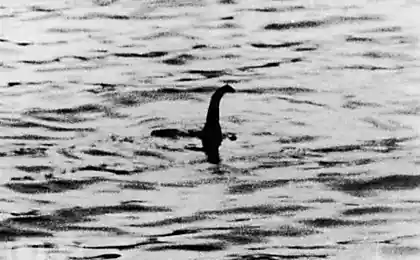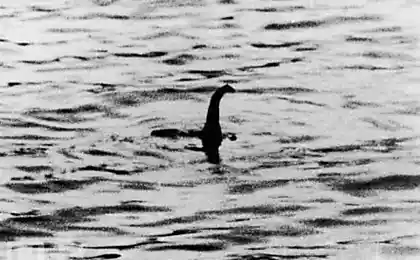524
Archeoraptor, the physics of vibrations and a mysterious toxin: 7 great scientific hoaxes
Five million five hundred seventy three thousand six hundred thirty five
Essential machine is an Outstanding American scientist of the NINETEENTH century by John Worrell Keely, like many others, dreamed of building a perpetual motion machine. And in 1885 said that he had invented a new mechanism for working with sound vibration, "rezoniruya with ether." Indeed, in his public experimento vibration of tuning forks raised three-kilogram metal balls and set in motion a great mechanical wheel.
Soon Keeley became the official author of a new science — physics of sympathetic vibration, and persuaded investors to open a company Keely Motor Company, to Fund its further development and experimentation. But then the scientist began to pull the time, keeping the interest of the sponsors of spectacular experiments, but not providing commercial samples. And after the death of Keely was that the story of the ethereal vibrations — just focus on the house and laboratory of the inventor was equipped with compressed air, which resulted in the movement of his instruments. However, not all strange experiments Keeley skeptics found the explanation — so the scientist left a lot of fans.
A mysterious toxin In 1990, three students at the University of California decided to test how far can the Americans go in your credibility of environmental propaganda. And disseminated to the campus leaflets warning about water pollution hazardous substance — dihydrogen monoxide. Four years later a Craig Jackson created a web page "Association to ban DHMO", and in 1997, 14-year-old schoolboy Nathan Zoner of Idaho, gathered 43 votes to ban the chemical, interviewing 50 classmates. The catch consisted in the fact that "dihydrogen monoxide" is just the alternative chemical name of water.
The study of Zoner about human gullibility has received recognition at a science fair in Idaho, but the use of dihydrogen monoxide have continued to disturb the minds of many years later. The last high-profile case was recorded in August 2007 when a member of the new Zealand Parliament Jacqueline Dean asked the Minister of health whether there are plans to do something to ban this harmful substance.
Generator scientific articles a Lot of problems brought to the scientific community the computer program SCIgen, developed at MIT. The program, created in recognition of the developers, rather for fun than for use, to generate random text resembling a scientific article — with illustrations, charts, and notes.
But in 2005 suddenly it turned out that the creation SCIgen is not so difficult to take at face value — article Rooter: A Methodology for the Typical Unification of Access Points and Redundancy was accepted for publication at the international conference WMSC, and the authors invited to make a presentation. The authors told about the hoax on its website, and because of the gullibility of the organizers of the conference had lost the financial support of the Institute of electrical and electronics engineers.
But this sad example is not made scientists alert: pseudo-scientific articles calmly accepted for publication at two conferences. Another similar article was leaked to the journal Applied Mathematics and Computation, where it had time to withdraw before printing — the author still admitted in the draw.
The invention, MIT has taken the worry and Russian editors: the year the staff of the popular scientific newspaper "Troitsky variant — Science" has translated into Russian the text of Rooter: A Methodology for the Typical Unification of Access Points and Redundancy, and managed to publish it in the "Journal of scientific publications graduate and doctoral students" (paying, however, for the publication of 4500 rubles). The publication caused a scandal in the scientific community, and the magazine was removed from the list of VAK. Mistake edition was more noticeable that article loomed several explicit allusions — in particular, in the reference list were listed author by the name of Softporn.
Food carcinogens In 1976 in France, there appeared a pamphlet entitled Villejuif leaflet outlining the alleged carcinogenic substances contained in food. Many took the pamphlet seriously, and the warning was spread throughout Europe, and then leaked to the middle East and even in Africa. The creation of the piece was attributed to staff Viljujskoe hospital.
The brochure had a significant impact on demand in grocery stores, when it was discovered that the list is not consistent with scientific data. The registry got even citric acid, which is produced in every living organism in a natural way. But the list was the reason for the present research is about the psychology of rumors.
New link evolution In 1912, the British lover of antiquities, Charles Doosan presented to the scientific community the skull of an ancient humanoid creature. According to Dosane, skull found work in a gravel pit in the town of Piltdown, and slightly damaged when digging. The discovery has been tested three scientists Arthur Smith Woodward, Arthur Keith and Grafton Elliot Smith. They stated that the skull belonged to a creature similar to modern human (though the brain volume was reduced by⅓), and the jaw resembled the jaw of a young chimpanzee, not counting the two molar teeth, similar to human. From this, scientists concluded that the Piltdown man is an intermediate evolutionary link between APE and man. And gave him the official name of the discoverer — Eoanthropus dawsoni.
A year later, the Dawson, Woodworth and de Chardin found in the same quarry the tooth of Entropa and nasal bones, and stone tools. Some scholars already then doubted the authenticity of the findings, but said nothing for fear of being laughed at. But in 1953 the specialists of a new generation of skeptics remains subjected to chemical analysis and found that the skull of Piltdown man was manually assembled from the jaws of a monkey-orangutan, chimpanzee teeth, and half of the human skull, artificially aged and painted with special dye.
The oldest settlement in Japan, a self-taught Archaeologist Shinichi Fujimura was able to make a number of important scientific discoveries and fueled much interest in archaeology among the Japanese population. In particular, he found evidence that a reasonable man built a primitive dwelling in Japan as early as 600 thousand years ago and discovered the first known fragment of ancient Japanese ceramics. The scientist was considered a national hero, and in school textbooks have a special section dedicated to his finds.
But in 2000, his colleague Takeo-ka Toliki in a personal conversation with the journalists of "Mainichi Shimbun" expressed their doubt in the truth finds Fujimori. He noted that the monotony of the findings, separated by time for hundreds of thousands of years, is more than a suspicion.
The newspaper decided to conduct its own investigation, and in September 2000 at the disposal of the correspondents were three photos Fujimura, hiding something in the new excavation of Soshin Futozao. Two months later, the scientist announced that he had discovered the remains of two ancient settlements in 600 thousand years — a few stones with drilled holes. But happy discovery time — 5 Nov
"Mainichi Shimbun" published the revealing photos on six pages. The scientist had to convene a press conference to formally acknowledge his guilt. It turned out that only Fujimura rigged 42 of the excavation of 180, in which participated.
A bird with a tail of a dinosaur Archaeoraptor — the remains of the ancient creatures, similar to both bird and dinosaur — was found in 1999 in Livingston reservoir in northeast China. In October 1999, National Geographic magazine published an article alleging that the discovery is a "missing link between terrestrial dinosaurs and birds that could actually fly". In fact, the article appeared and the name Archaeoraptor liaoningensis, which, however, was not the official scientific name finds.
But in 2000, the editors of National Geographic conducted an investigation with the assistance of Chinese and American paleontologists and acknowledged that "Archaeoraptor" is a fake: the skeleton was assembled from pieces of fossils of various kinds. The tail belonged to a rare arboreal dinosaur microraptor and the front part of the ancient bird Yanornis martini.published
P. S. And remember, only by changing their consumption — together we change the world! ©
Source: theoryandpractice.ru
Essential machine is an Outstanding American scientist of the NINETEENTH century by John Worrell Keely, like many others, dreamed of building a perpetual motion machine. And in 1885 said that he had invented a new mechanism for working with sound vibration, "rezoniruya with ether." Indeed, in his public experimento vibration of tuning forks raised three-kilogram metal balls and set in motion a great mechanical wheel.
Soon Keeley became the official author of a new science — physics of sympathetic vibration, and persuaded investors to open a company Keely Motor Company, to Fund its further development and experimentation. But then the scientist began to pull the time, keeping the interest of the sponsors of spectacular experiments, but not providing commercial samples. And after the death of Keely was that the story of the ethereal vibrations — just focus on the house and laboratory of the inventor was equipped with compressed air, which resulted in the movement of his instruments. However, not all strange experiments Keeley skeptics found the explanation — so the scientist left a lot of fans.
A mysterious toxin In 1990, three students at the University of California decided to test how far can the Americans go in your credibility of environmental propaganda. And disseminated to the campus leaflets warning about water pollution hazardous substance — dihydrogen monoxide. Four years later a Craig Jackson created a web page "Association to ban DHMO", and in 1997, 14-year-old schoolboy Nathan Zoner of Idaho, gathered 43 votes to ban the chemical, interviewing 50 classmates. The catch consisted in the fact that "dihydrogen monoxide" is just the alternative chemical name of water.
The study of Zoner about human gullibility has received recognition at a science fair in Idaho, but the use of dihydrogen monoxide have continued to disturb the minds of many years later. The last high-profile case was recorded in August 2007 when a member of the new Zealand Parliament Jacqueline Dean asked the Minister of health whether there are plans to do something to ban this harmful substance.
Generator scientific articles a Lot of problems brought to the scientific community the computer program SCIgen, developed at MIT. The program, created in recognition of the developers, rather for fun than for use, to generate random text resembling a scientific article — with illustrations, charts, and notes.
But in 2005 suddenly it turned out that the creation SCIgen is not so difficult to take at face value — article Rooter: A Methodology for the Typical Unification of Access Points and Redundancy was accepted for publication at the international conference WMSC, and the authors invited to make a presentation. The authors told about the hoax on its website, and because of the gullibility of the organizers of the conference had lost the financial support of the Institute of electrical and electronics engineers.
But this sad example is not made scientists alert: pseudo-scientific articles calmly accepted for publication at two conferences. Another similar article was leaked to the journal Applied Mathematics and Computation, where it had time to withdraw before printing — the author still admitted in the draw.
The invention, MIT has taken the worry and Russian editors: the year the staff of the popular scientific newspaper "Troitsky variant — Science" has translated into Russian the text of Rooter: A Methodology for the Typical Unification of Access Points and Redundancy, and managed to publish it in the "Journal of scientific publications graduate and doctoral students" (paying, however, for the publication of 4500 rubles). The publication caused a scandal in the scientific community, and the magazine was removed from the list of VAK. Mistake edition was more noticeable that article loomed several explicit allusions — in particular, in the reference list were listed author by the name of Softporn.
Food carcinogens In 1976 in France, there appeared a pamphlet entitled Villejuif leaflet outlining the alleged carcinogenic substances contained in food. Many took the pamphlet seriously, and the warning was spread throughout Europe, and then leaked to the middle East and even in Africa. The creation of the piece was attributed to staff Viljujskoe hospital.
The brochure had a significant impact on demand in grocery stores, when it was discovered that the list is not consistent with scientific data. The registry got even citric acid, which is produced in every living organism in a natural way. But the list was the reason for the present research is about the psychology of rumors.
New link evolution In 1912, the British lover of antiquities, Charles Doosan presented to the scientific community the skull of an ancient humanoid creature. According to Dosane, skull found work in a gravel pit in the town of Piltdown, and slightly damaged when digging. The discovery has been tested three scientists Arthur Smith Woodward, Arthur Keith and Grafton Elliot Smith. They stated that the skull belonged to a creature similar to modern human (though the brain volume was reduced by⅓), and the jaw resembled the jaw of a young chimpanzee, not counting the two molar teeth, similar to human. From this, scientists concluded that the Piltdown man is an intermediate evolutionary link between APE and man. And gave him the official name of the discoverer — Eoanthropus dawsoni.
A year later, the Dawson, Woodworth and de Chardin found in the same quarry the tooth of Entropa and nasal bones, and stone tools. Some scholars already then doubted the authenticity of the findings, but said nothing for fear of being laughed at. But in 1953 the specialists of a new generation of skeptics remains subjected to chemical analysis and found that the skull of Piltdown man was manually assembled from the jaws of a monkey-orangutan, chimpanzee teeth, and half of the human skull, artificially aged and painted with special dye.
The oldest settlement in Japan, a self-taught Archaeologist Shinichi Fujimura was able to make a number of important scientific discoveries and fueled much interest in archaeology among the Japanese population. In particular, he found evidence that a reasonable man built a primitive dwelling in Japan as early as 600 thousand years ago and discovered the first known fragment of ancient Japanese ceramics. The scientist was considered a national hero, and in school textbooks have a special section dedicated to his finds.
But in 2000, his colleague Takeo-ka Toliki in a personal conversation with the journalists of "Mainichi Shimbun" expressed their doubt in the truth finds Fujimori. He noted that the monotony of the findings, separated by time for hundreds of thousands of years, is more than a suspicion.
The newspaper decided to conduct its own investigation, and in September 2000 at the disposal of the correspondents were three photos Fujimura, hiding something in the new excavation of Soshin Futozao. Two months later, the scientist announced that he had discovered the remains of two ancient settlements in 600 thousand years — a few stones with drilled holes. But happy discovery time — 5 Nov
"Mainichi Shimbun" published the revealing photos on six pages. The scientist had to convene a press conference to formally acknowledge his guilt. It turned out that only Fujimura rigged 42 of the excavation of 180, in which participated.
A bird with a tail of a dinosaur Archaeoraptor — the remains of the ancient creatures, similar to both bird and dinosaur — was found in 1999 in Livingston reservoir in northeast China. In October 1999, National Geographic magazine published an article alleging that the discovery is a "missing link between terrestrial dinosaurs and birds that could actually fly". In fact, the article appeared and the name Archaeoraptor liaoningensis, which, however, was not the official scientific name finds.
But in 2000, the editors of National Geographic conducted an investigation with the assistance of Chinese and American paleontologists and acknowledged that "Archaeoraptor" is a fake: the skeleton was assembled from pieces of fossils of various kinds. The tail belonged to a rare arboreal dinosaur microraptor and the front part of the ancient bird Yanornis martini.published
P. S. And remember, only by changing their consumption — together we change the world! ©
Source: theoryandpractice.ru
How to grow tasty and healthy tomatoes, creating a living soil in a greenhouse
Wind turbine without blades: a more economical method for the production of electricity from wind























